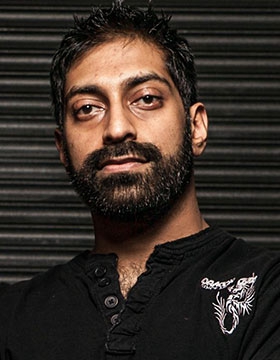Some tactical advice for you today.
Recently, Lonnie Beck and I surveyed our Adult Muay Thai Kickboxing and Adult Martial Arts (Taekwondo and Hapkido) students. One of the questions asked what else folks would like to be doing in classes. Many students asked that we do more stretching, both before and after classes / workouts. This is somewhat expected knowing how we run our classes and the focus of our class formats; however, more interesting was the reason why students were asking for more stretching.
Students were asking for more stretching because they were sore and specifically stated that they needed / wanted more stretching to help alleviate the soreness.
Quick aside: DOMS stands for "Delayed Onset Muscle Soreness" Essentially, it is when your muscles feel sore a day or two after a workout.

Now, I had thought, assumed really, that the idea that stretching would help alleviate DOMS had largely been abandoned over the last several years. But, clearly many of our students still believe this. Unfortunately, it is a myth. It is a misconception that stretching will do anything at all to help out with the post workout soreness that we call DOMS.
I say unfortunate, because it really is. Wouldn't it be great, if we could just do a simple thing like some passive stretches for a few minutes after class thus eliminating soreness, enabling us to work harder, train more often and reap the benefits we seek in a shorter time frame? But...the human body does not work this way.
Where did this myth come from?
It's hard to say, but probably from the realization that stretching feels good. Because it feels good, we are all quick to make the leap that stretching has some curative properties....it does not.
What do we know about stretching?
It will not make your muscles longer, prevent injury, or prevent/alleviate muscles soreness. So, is stretching bad? No, but it's just not effective before training (maybe even dangerous) to prevent injury or increase performance or effective after training to alleviate pain.
It is effective in increasing your range of motion over the long term, but you are still going to get DOMS at times.
You see, the body adapts to the demands that you, we, put on it. We call this the SAID principle: Specific Adaptations to Imposed Demands. When you introduce something new, or more strenuous, your body needs to adapt and this is often felt as soreness.
For example, the first time you came to class you probably threw more kicks and punches in one hour than in the whole sum of your lifetime and you were sore. This soreness wasn't because you didn't stretch enough, but because your body wasn't used to kicking and punching so much. Over time, your body will continue to adapt and you will need more and more stimulus to get the same amount of soreness.
That's a good thing.
Taking class, working out, and training causes adaptation...change. But, this change is specific to the demands that you put on your body. What is the change that you seek?
More specifically, what are the side effects that the demands of training will incite through adaptation?
Huh?
We all have goals for training and they vary quite a bit from person to person. For some it is weight loss, for others it is learning to fight, and for many it is a combination of things. What we often call goals or benefits of training are really side-effects of training.
How will you map our your training journey so that you get the side effects you desire?
That brings me to my next point. The answer is knowledge.
Many of you thought that stretching would achieve a helpful side-effect, less soreness, but that is not the case. Sometimes we accept conventional / colloquial wisdom to easily and it can be to our detriment in the long run.
(also remember, the placebo effect IS AN EFFECT)
There is an over abundance of training information available now. It is important to give all of it a discerning and skeptical eye and to be constantly re-evaluating our processes, our training map.
The great thing about being a teacher is the constant learning and development that occurs. The way we teach now is quite different than how we taught 5-10-15 years ago and for good reason. We are continuously skeptical, even of our own methods, seeking to not only keep the edge sharp, but surpass previous sharpness.
Be similarly discerning and skeptical in your own training. Does something you are doing make sense? If it "works", then it should work. Does it fit in with your goals (desired side effects)?
If you if have questions about what you are doing, or why you are doing it, please ask us.
It will make you a better, more successful student and it will make us better teachers.
Sincerely,
Somnath Sikdar
Post Script: This is by no means an exhaustive list. Just a point. Here are several "scholarly articles" as google calls them on the studies examine the effects of stretching as related to DOMS.

